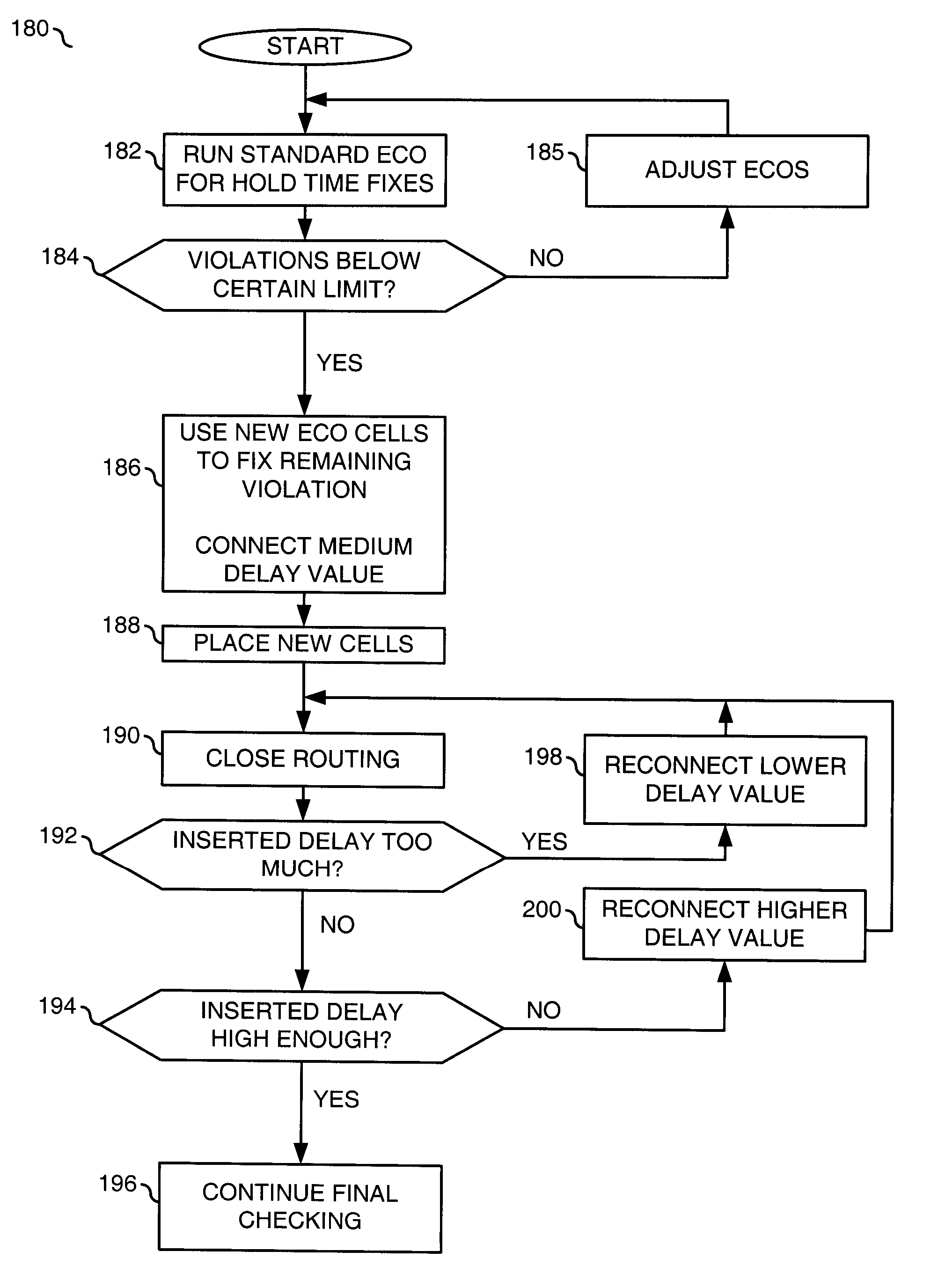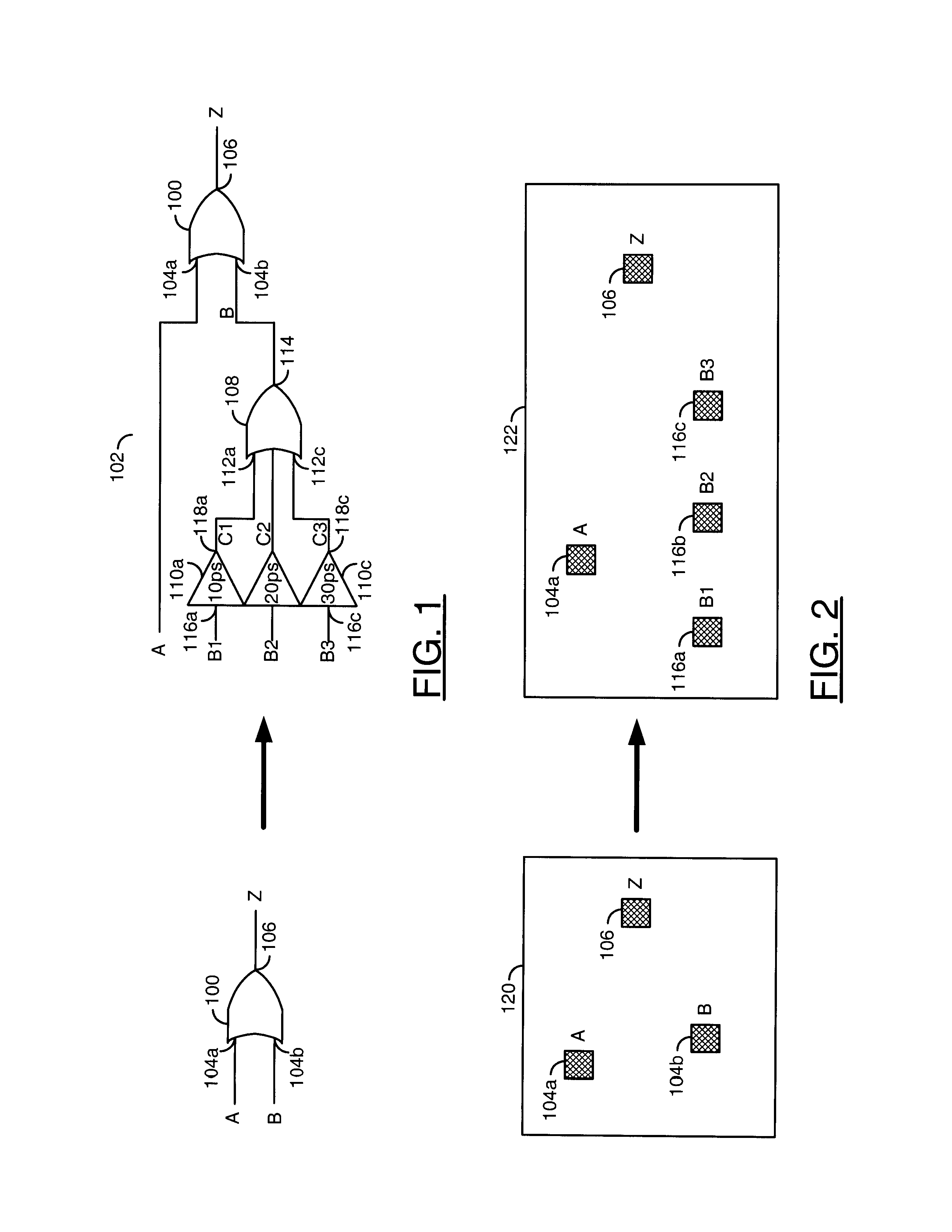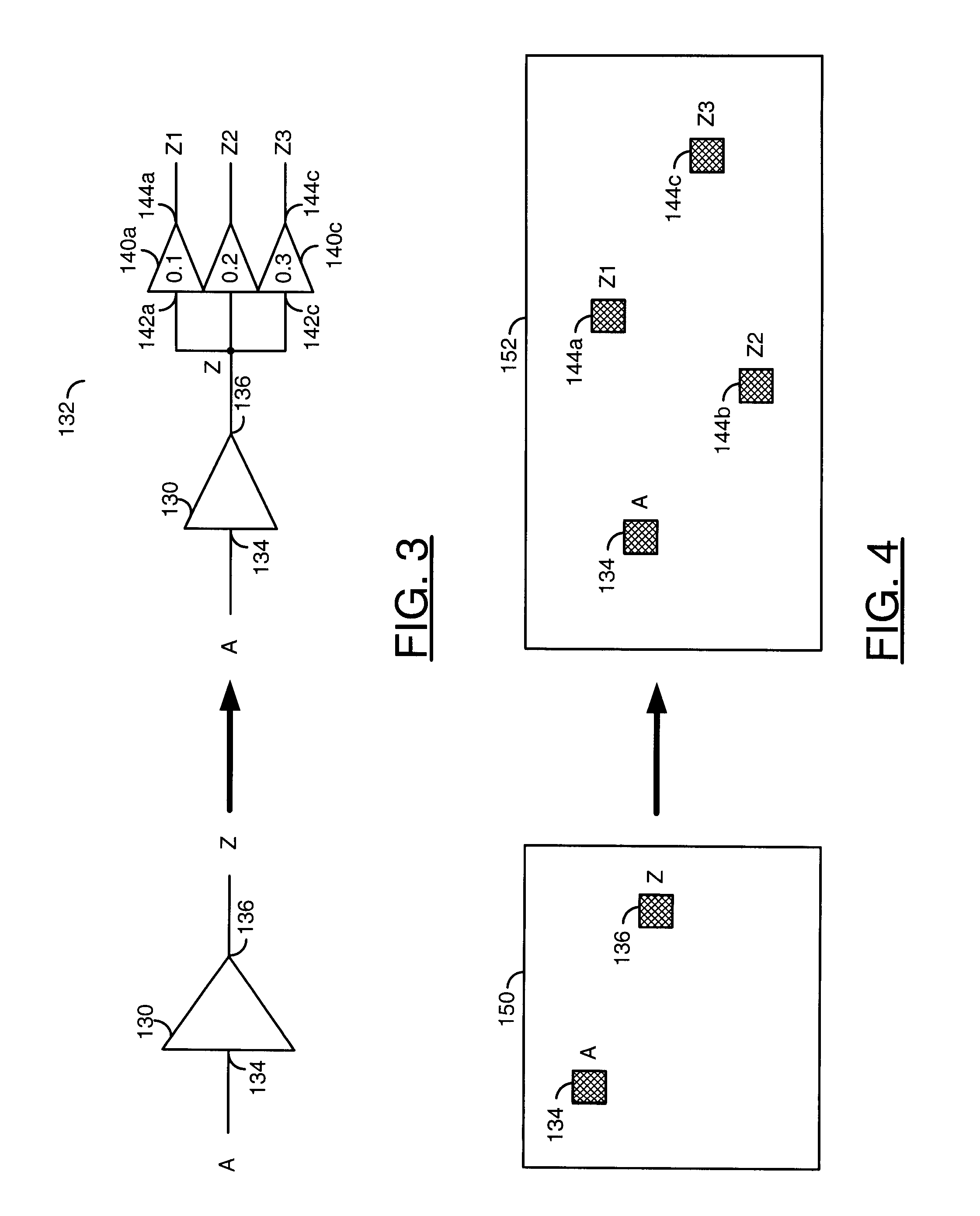Special engineering change order cells
a technology of change order and cells, applied in the field of application specific integrated circuit development, can solve the problems of inability to accurately schedule the project, second iteration of the ecos, and different conventional tools used to do the job not being correlated well to each other, so as to minimize the impact of signal integrity, minimize the impact of signal timing, and minimize the effect of a number of new violations
- Summary
- Abstract
- Description
- Claims
- Application Information
AI Technical Summary
Benefits of technology
Problems solved by technology
Method used
Image
Examples
Embodiment Construction
[0017]In multi-million gate chip designs, turn around times during design closure are generally very long. Reducing a number of loops or iterations to adjust a circuit design may significantly shorten a schedule. The present invention concerns a new set of library circuit (or cells) that may be used to fix timing and / or signal integrity violations encountered while completing the circuit design. The new set of cells may be useful in an engineering change order (ECO) phase of a design. During the ECO phase, a netlist for the circuit design may only be changed a little to fix signal timing and / or signals integrity violations.
[0018]The new cells may be functionally similar to corresponding standard cells and generally provide a wider choice of input and / or output pins and capabilities. Each pin is generally configured to provide a different performance characteristic than neighboring pins. The different performance characteristics may include, but are not limited to, different insertio...
PUM
 Login to View More
Login to View More Abstract
Description
Claims
Application Information
 Login to View More
Login to View More - R&D
- Intellectual Property
- Life Sciences
- Materials
- Tech Scout
- Unparalleled Data Quality
- Higher Quality Content
- 60% Fewer Hallucinations
Browse by: Latest US Patents, China's latest patents, Technical Efficacy Thesaurus, Application Domain, Technology Topic, Popular Technical Reports.
© 2025 PatSnap. All rights reserved.Legal|Privacy policy|Modern Slavery Act Transparency Statement|Sitemap|About US| Contact US: help@patsnap.com



